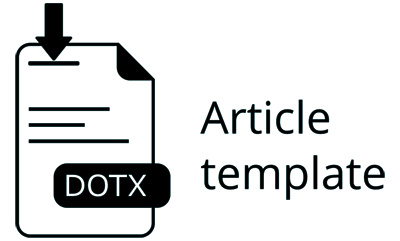VARIASI PENAMBAHAN SIKACIM PADA BETON POROUS
Abstract
Pervious concrete is environmentally friendly concrete because it has interconnected cavities that produce a permeable material, allowing it to drain water quickly and reduce runoff so that it is possible to drain water quickly and reduce runoff. This concrete can be applied to parking areas, sidewalks for pedestrians, and others. The purpose of this study was to determine the characteristics of the concrete by observing its compressive strength and porosity. The method used is the experiment with a sample of cylindrical specimens measuring 150 x 300 mm. This study uses coarse aggregate, cement, water, and the percentage variation of the addition of SikaCim Concrete Additive admixture by 0% (control); 0.3%; 0.5%; 0.7% by weight of cement. The water-cement ratio used was 0.25 and 0.30 and the ratio of cement and coarse aggregate was 1:3 and 1:5. The results showed that the compressive strength value of pervious concrete increased along with the smaller the value of the cement and coarse aggregate ratio. The pervious concrete with a water-cement ratio of 0.25 is higher than that of 0.30. There is a relationship between porosity and compressive strength. Compressive strength generally increases with decreasing porosity. The highest average value of compressive strength with variations in the addition of SikaCim of 0.5% and a ratio cement and coarse aggregate of 1:3 and a water-cement ratio of 0.3, with an average compressive strength value of 18.08 MPa, and included in category B which is used for parking areas.
References
Anonim. (1996). SNI 03-0691-1996 tentang persyaratan mutu bata beton (paving block). Jakarta: Badan Standardisasi Nasional.
Anonim. (2008a). SNI 1969-2008 tentang cara uji berat jenis dan penyerapan air agregat kasar. In Standar Nasional Indonesia. Jakarta: Badan Standardisasi Nasional.
Anonim. (2008b). SNI 2417 : 2008 tentang cara uji keausan agregat dengan mesin abrasi Los Angeles. Jakarta: Badan Standardisasi Nasional.
Anonim. (2010). Report on Pervious Concrete (American Concrete Institute Committee 522, Ed.). U.S.A: American Concrete Institute.
Anonim. (2011). SNI 1974 : 2011 tentang Cara uji kuat tekan beton dengan benda uji silinder. Jakarta: Badan Standardisasi Nasional.
Anonim. (2013). Standard Test Method for Density, Absorption, and Voids in Hardened Concrete. In Annual Book of ASTM Standards (Ed.), Annual Book of ASTM Standards. Annual Book of ASTM Standards.
Anonim. (2014a). CIP-38 Pervious Concrete.
Anonim. (2014b). SNI 2461 : 2014 tentang spesifikasi agregat ringan untuk beton struktural. Jakarta: Badan Standardisasi Nasional.
Anonim. (2019). SikaCim Concrete Additive. In PT. Sika Indonesia.
Barnhouse, P. W., & Srubar, W. V. (2016). Material characterization and hydraulic conductivity modeling of macroporous recycled-aggregate pervious concrete. Construction and Building Materials, 110(May), 89–97.
Ginting, A. (2015). Kuat Tekan Dan Porositas Beton Porous Dengan Bahan Pengisi Styrofoam. Jurnal Teknik Sipileknik Sipil, 11(2), 76–98.
Ginting, A., Adi, P., & Costa, D. O. M. (2014). Pengaruh Penambahan Pasir Terhadap Kuat Tekan dan Porositas Beton Porous. Jurnal Teknik, 4(2), 84–91.
Harber, P. J. (2005). Applicability of No-Fines Concrete as a Road Pavement A dissertation submitted by.
Jamal, M., Widiastuti, M., & Anugrah, A. T. (2017). Pengaruh Penggunaan Sikacim Concrete Additive Terhadap Bengalon Dan Agregat Halus Pasir Mahakam. Prosiding Seminar Nasional Teknologi IV, (November), 28–36.
Megasari, S. W., Yanti, G., & Zainuri. (2020). Hubungan Karakteristik Beton Porous dengan Variasi Komposisi Agregat Kasar. Prosiding Seminar Nasional Pakar, 1–17.
Novrianti, & Respati, R. (2014). Pengaruh Aditif Sikacim Terhadap Campuran Beton K 350 Ditinjau Dari Kuat Tekan Beton. Media Teknik Sipil, 2(2), 64–69.
Pandei, R. W., Supit, S. W. M., Rangan, J., & Karwur, A. (2019). Studi Eksperimen Pengaruh Pemanfaatan Superplasticizer Terhadap Kuat Tekan dan Permeabilitas Beton Berpori (Pervious Concrete). POLITEKNOLOGI, 18(1), 45–52.
Sultan, M. A., Imran, & Litiloly, F. (2018). Korelasi Porositas Beton Terhadap Kuat Tekan Rata-Rata. Teknologi Sipil, 2(2), 57–63.
Teraiya, D., Doshi, U., Viradiya, P., Yagnik, A., & Joshi, T. (2015). To Develop Method To Find Out Permeability and Void Ratio for Pervious Concrete. International Journal of Research in Engineering and Technology, 04(13), 177–182. https://doi.org/10.15623/ijret.2015.0425026
Welker, A. L., Barbis, J. D., & Jeffers, P. A. (2012). A Side-By-Side Comparison of Pervious Concrete And Porous Asphalt. Journal Of The American Water Resources Association, 48(4), 809–819. https://doi.org/10.1111 ℠j.1752-1688.2012.00654.x
Yanti, G., Megasari, S. W., & Zainuri. (2020). Variation Analysis Addition of Admixture Consol N10 MB to Concrete Compressive Strength. IOP Conference Series: Earth and Environmental Science, 012031.
Yanti, G., Zainuri, & Megasari, S. W. (2019). Peningkatan Kuat Tekan dan Kuat Lentur Beton Dengan Variasi Penambahan Serat Daun Nanas. TEKNIK, 40(1), 71–76. https://doi.org/10.14710/teknik.v40n1.23390
Yanti, G., Zainuri, Z., & Megasari, S. W. (2018). Analisa Perbandingan Penambahan Variasi Consol Terhadap Kuat Tekan Beton. SIKLUS: Jurnal Teknik Sipil, 4(1), 59–66. https://doi.org/10.31849/siklus.v4i1.1155
Zhong, R., Xu, M., Netto, R. V., & Wille, K. (2016). Influence of pore tortuosity on hydraulic conductivity of pervious concrete: Characterization and modeling. Construction and Building Materials, 125, 1158–1168.
Authors who publish with this journal agree to the following terms:
- Authors retain copyright and grant the journal right of first publication with the work simultaneously licensed under a Creative Commons Attribution License that allows others to share the work with an acknowledgement of the work's authorship and initial publication in this journal.
- Authors are able to enter into separate, additional contractual arrangements for the non-exclusive distribution of the journal's published version of the work (e.g., post it to an institutional repository or publish it in a book), with an acknowledgement of its initial publication in this journal.
- Authors are permitted and encouraged to post their work online (e.g., in institutional repositories or on their website) prior to and during the submission process, as it can lead to productive exchanges, as well as earlier and greater citation of published work (See The Effect of Open Access).
 Abstract viewed = 412 times
Abstract viewed = 412 times
 PDF downloaded = 939 times
PDF downloaded = 939 times










